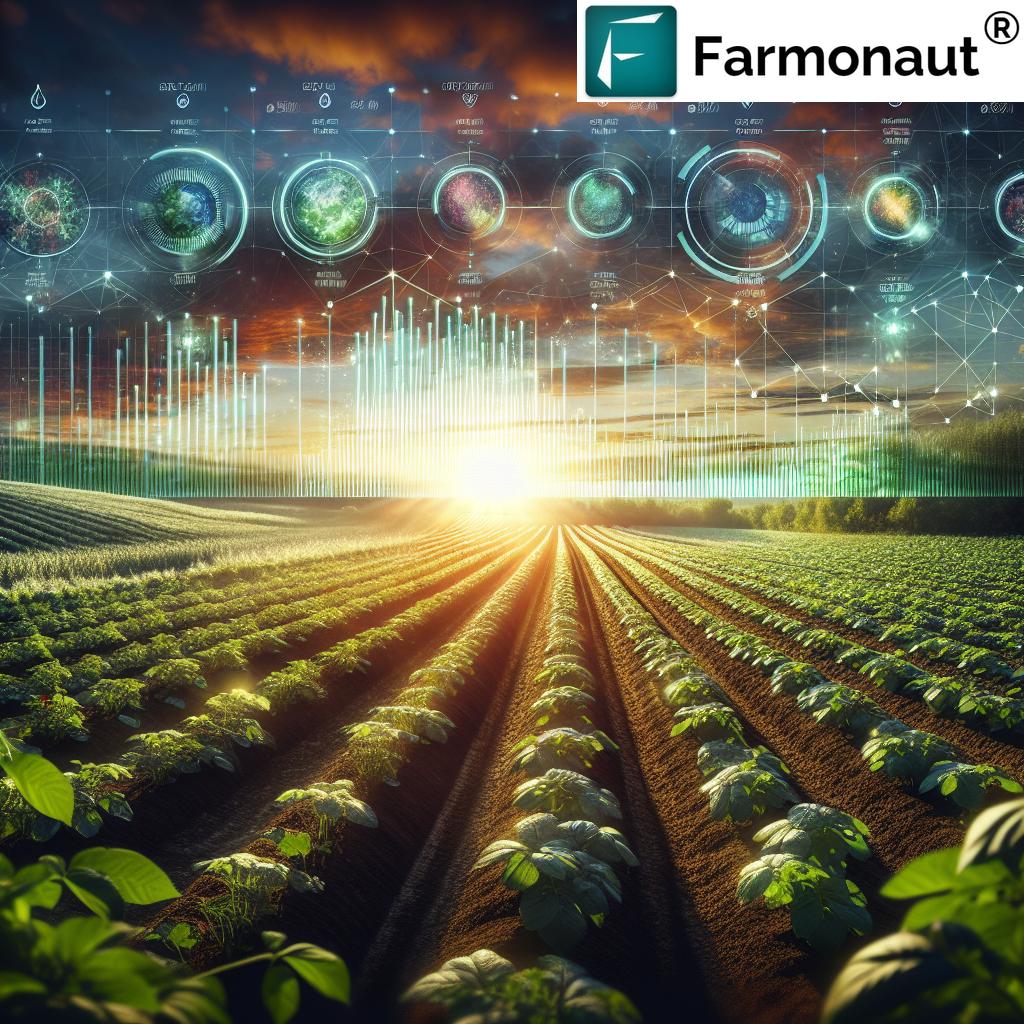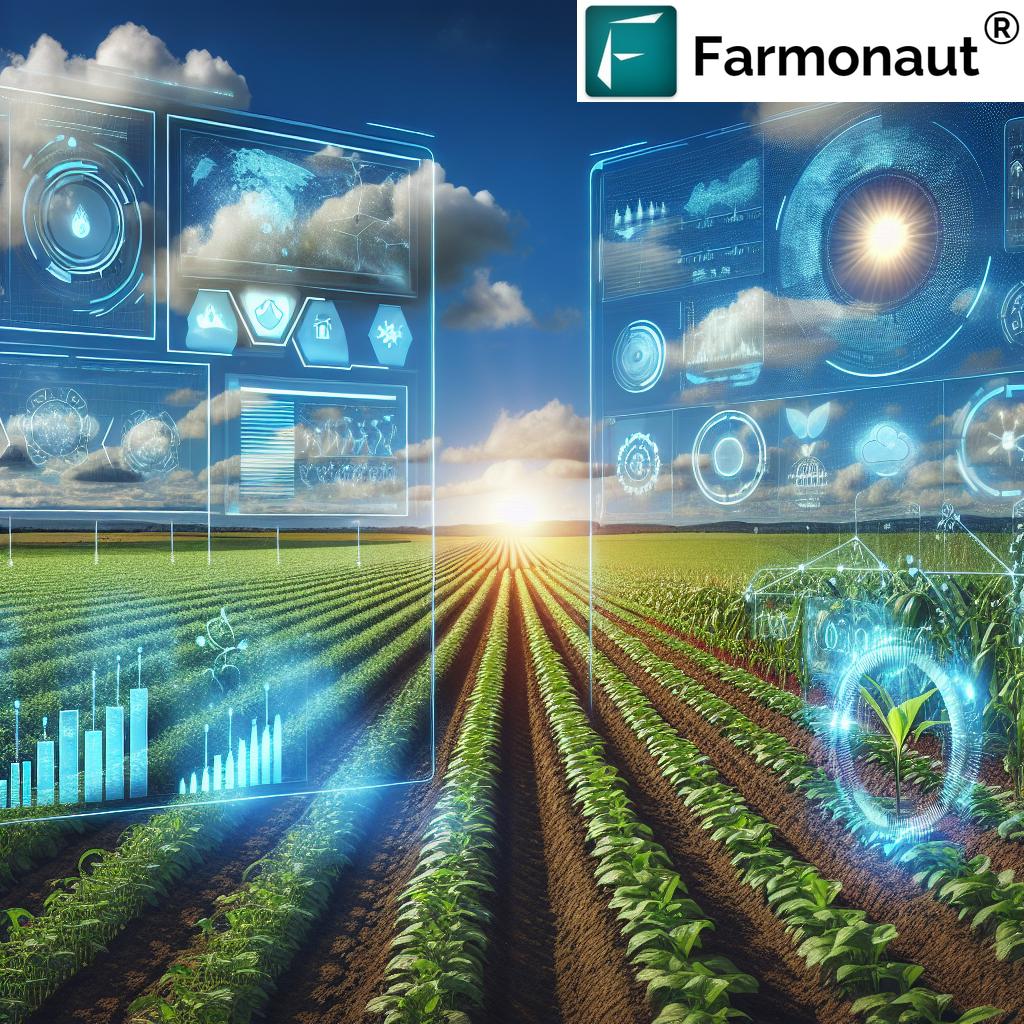Swine Farm: Manure Fertilizer & Combine Machine Tips 2026
“Manure recycling can cut synthetic fertilizer use by up to 40% on swine farms, improving soil health and sustainability.”
Modern Swine Farm Sustainability in 2026: Meeting the Needs of a Growing World
Swine farm operations stand at a pivotal moment in modern agriculture. As global demand for animal protein soars, efficient swine raising becomes increasingly crucial. In 2026 and beyond, we must confront the dual imperative of sustainability and efficiency. The answer lies in combining swine manure as fertilizer with advanced machinery like combine farm machines. This blend not only enhances productivity but also improves soil health, reduces waste, and supports resilient, integrated farming systems.
A swine farm is no longer simply a place for pig raising. It has grown into a component of a technologically rich and environmentally aware sector. By 2026, farms—regardless of size or scale—will depend increasingly on synergy between manure recycling, advanced crop cultivation, and mechanized operations that emphasize integration for sustainable growth.
Why the Focus on Swine Manure and Advanced Machinery?
- Swine manure as fertilizer is a rich source of nitrogen, phosphorus, and potassium.
- Modern combine machines cut costs, reduce labor, and ensure timely harvesting of feed crops essential for livestock.
- When combined in an integrated system, these elements form the backbone of sustainable, productive farming—reducing dependency on synthetic fertilizers and boosting farm efficiency.
Swine Manure Management: Transforming Waste into Fertilizer Gold
One of the major challenges facing pig farmers is manure management. Swine manure as fertilizer provides a sustainable and environmentally sound alternative to chemical-based inputs. When applied correctly, manure improves soil fertility and supports higher crop yields.
Let’s break down the essentials of manure utilization in the context of 2026 farming:
- Nutrient Recycling: Swine manure is rich in nitrogen, phosphorus, and potassium—key minerals vital for robust crop production and soil health.
- Manure Management Plans: The creation of structured manure plans enables farmers to match nutrient outputs with crop inputs, closing loops and reducing dependency on costly synthetic fertilizers.
- Anaerobic Digesters: Advanced technologies such as anaerobic digesters convert swine waste into biogas energy. The remaining digestate acts as a potent organic fertilizer, further enhancing soil quality while reducing greenhouse gas emissions.
- Environmental Impact: Efficient manure management reduces environmental pollution, decreases emissions, and supports circular agriculture—where waste becomes a valuable input.
Manure Application Methods and Best Practices
- Solid Manure Spreading: Suitable for smaller-scale or mixed farms. Manure is applied by mechanical spreaders for even distribution.
- Liquid Manure Injection: Allows deep placement of nutrients, reducing surface runoff and emissions.
- Composting: By composting manure before application, farmers reduce pathogens, improve consistency, and enhance soil structure.
For precise monitoring of carbon emissions and sustainability-oriented agricultural planning, Farmonaut offers advanced carbon footprinting solutions that leverage satellite data—helping you capture the true environmental impact of your swine farming operations.
Swidden Farming and Sustainable Land Use: Redefining Land Productivity
Swidden farming—also called slash-and-burn cultivation—is an ancient practice still relevant in certain tropical regions and in parts of Asia and South America. Historically, it enabled subsistence farmers to meet dietary needs in forested areas by temporarily clearing land for crop production. However, in the context of environmental crises, finding eco-friendly solutions to land degradation is essential.
- Swine manure as fertilizer restores the lost fertility of swidden fields, enabling more sustainable cultivation cycles and reducing the need for continuous land expansion.
- Agroforestry: By integrating tree planting with swine raising, farms improve biodiversity, shade, and nutrient cycling while also capturing carbon.
- Optimizing Land Use: Integrated farms combine animal raising, smart manure management, and crop cultivation to maximize output without further environmental damage.
Swidden farm practices are still predominantly used in certain regions, but manure fertilizer and technology provide a critical bridge to better environmental management and sustainable yield.
“Integrated combines on pig farms may increase operational efficiency by 25%, streamlining manure management and crop production.”
Integrated Farming Systems: The Backbone of Future Agriculture
Integrated farming systems will dominate sustainable agricultural production in 2026 and beyond. These systems combine livestock raising, organic fertilizer application, technology, and resource-smart machinery—creating a synergy where each component supports the others for maximum efficiency and lowest environmental impact.
- Manure from swine raising becomes valuable fertilizer for crops.
- Harvested grains via combine machines become alternate feed for livestock.
- Integrating technology (such as Farmonaut’s large-scale farm management tools) ensures that inputs and outputs are balanced with maximum resource efficiency.
- Digital coordination: In 2026, digital platforms enable real-time tracking of soil data, fertilizer needs, machinery utilization, and harvesting schedules—making farming smarter, more responsive, and more resource-efficient.
- Sustainable Yield: By closing nutrient loops and optimizing inputs, these systems can increase yields by 20% or more—reducing environmental impacts and driving profitability.
- Cost Efficiency: By maximizing the utilization of on-site resources, such as manure and home-grown grain feed, reliance on pricey external inputs is diminished.
Farm Combines: Machines Powering Modern Production & Efficiency
The role of the combine farm machine in 2026 is dramatically different from previous decades. A combine is an advanced, mechanized harvesting tool that both harvests and processes grain crops in one integrated pass. For swine farms, this means:
- Efficient Grain Harvesting: Combine machines enable farmers to simultaneously reap, thresh, and clean large crops—vital for on-site pig feed production.
- Reduced Labor Costs: Automation allows large farms and even small-scale enterprises to minimize manual labor requirements, reduce operational costs, and complete tasks swiftly.
- Advanced Sensor Integration: Modern combines use sensors and AI to optimize harvesting parameters—leading to fuel savings and lower emissions.
- Timely Harvest = Better Nutrition: On-time harvesting prevents crop loss and provides fresh grain to meet livestock dietary requirements year-round.
To monitor combine machine performance and resource use, Farmonaut’s fleet management platform gives insights on machinery usage, operational efficiency, and can help optimize logistics for both equipment and crop movement.
Key Features of Next-Generation Combine Farm Machines
- Autonomous Capabilities: Self-driving combines guided by AI and GPS reduce errors and risks.
- IoT & Remote Monitoring: Allows farmers to track productivity, energy use, breaks, and performance in real time from any location.
- Adaptable Attachments: Equipment modularity means a single machine can switch roles—harvesting grain one day and chopping corn stalks for bedding the next.
- Reduced Fuel Consumption: Innovations in engine and drive systems lead to lower carbon footprints.
By harnessing the role of combine machines, swine raising becomes more efficient, and nutrient cycles are effectively managed. This closes the production loop, reduces costs, and enhances the environmental credentials of the entire farm operation.
Comparative Impact Table: Conventional vs. Integrated Swine Farming Practices
| Farming Practice | Manure Utilization Method | Technology/Equipment Used | Estimated Yield Improvement (%) | Environmental Impact (Emission Reduction) | Cost Efficiency (Estimated Annual Savings) |
|---|---|---|---|---|---|
| Traditional Swine Farming | Minimal; Direct Waste Disposal | Basic Tools | 0% | High emissions; soil depletion | Baseline (Low, rising costs) |
| Manure Fertilizer Adoption | Raw/Composted Manure Application | Spreader, Composting Units | 10-20% | Up to 15% emission reduction | 15% savings (fertilizer cost) |
| Integrated Combines Usage | Targeted Field Application | Combine Machines, Sensors | 15-25% | 20% emission reduction | 20% lower overall costs |
| Full Sustainable System | Precision Manure, Anaerobic Digester | Combine Farm Machine, IoT, Satellite Monitoring | 20-30% | Up to 30% emission reduction | 30%+ cost efficiency |
The move from traditional to integrated systems is clear—sustainability pays off in yields, emission reduction, and operational savings. These data-driven improvements will define modern swine farming in 2026.
Farmonaut: Pioneering Satellite & Tech-Based Swine Farm Sustainability
At Farmonaut, our mission is to make cutting-edge satellite, AI, and digital tools accessible for agricultural enterprises of every size. Our solutions empower swine farms, grain production operations, and integrated systems to optimize resource use, track environmental impact, and drive sustainable growth.
- Satellite-Based Crop Monitoring: We provide real-time NDVI satellite analysis for crop health, soil condition, and resource use—essential for efficient manure fertilizer application and harvest timing.
- Jeevn AI Advisory: Our AI delivers field-by-field nutrient guidance, weather alerts, and operational strategies to streamline integrated farm management.
- Blockchain Traceability: Farmonaut product traceability enhances transparency and food safety for pork, grain, and fertilizer supply chains.
- Fleet Management: Link all combine machines, tractors, and manure spreaders with Farmonaut’s fleet management solutions to minimize fuel waste and optimize machine utilization.
- Environmental Impact Tracking: Track carbon footprint, emissions, and land use with our intuitive dashboards—critical for carbon credits and compliance.
- Crop Loan & Insurance Verification: Secure agricultural loans and insurance with satellite-based verification tools from Farmonaut—enabling access to finance while lowering fraud risk.
Access our satellite API and developer documentation to build and integrate advanced monitoring into your existing farm management or livestock information systems.
Essential Farmonaut Tools & Resources for Swine Farms
- Carbon Footprinting Solution: Pinpoint carbon emissions and environmental impact for compliance and eco-marketing.
- Product Traceability Platform: Ensure verifiable pork and grain origins along the supply chain, supporting food safety and regulatory standards.
- Fleet Management Tools: Real-time insights to optimize movements of combines, spreaders, and all farm vehicles.
- Crop Loan & Insurance Verification: Secure documentation for finance and insurance claims using satellite-verified data.
- Large Scale Agro Admin App: Comprehensive, centralized dashboard for big farm and cooperative operations—ideal for integrated livestock and crop management.
- Crop Plantation, Forest, & Advisory Services: Specialty guidance for sustainable land use, carbon farming, and optimal crop-livestock rotation.
10 Practical Benefits of Sustainable Swine Farm Integration in 2026
- Substantial emissions reduction (up to 30%) via manure recycling and efficient combine use.
- Increase in crop and livestock yields (20-30%) by optimizing nutrient cycling.
- Significant cost savings by reducing dependency on synthetic fertilizers and off-site feed.
- Improved soil health and fertility through continuous application of organic matter.
- Enhanced operational efficiency with digital coordination and precision machinery.
- Stronger resilience to climate shocks due to greater biodiversity and resource flexibility.
- Better regulatory compliance and market access (carbon credits, supply chain traceability).
- Lower risk of environmental penalties by reducing runoff and pollution.
- More accessible financing and insurance with reliable satellite data.
- Sustainable reputation and eco-branding benefit in consumer markets.
10 Key Tips for Swine Farmers Adopting Manure & Combines in 2026
- Develop a nutrient management plan targeting precise manure application by crop type and season.
- Invest in manure processing technologies (e.g., composters, anaerobic digesters) to boost fertilizer quality and create biogas energy.
- Incorporate combine harvesters to mechanize feed and grain production, reducing labor and operational time.
- Use AI and satellite-based tools (like those offered by Farmonaut) to monitor soil, crop health, and machinery efficiency.
- Rotate animal and crop production to maintain long-term soil fertility and minimize pests.
- Document environmental practices for compliance, supply chain partners, and marketing purposes.
- Monitor carbon footprint and resource use for better sustainability reporting.
- Train staff on new equipment and digital platforms to maximize ROI.
- Apply for incentives and credits (where available) for adopting sustainable practices.
- Stay updated with regulatory and technological advancements in manure management and combine machines.
FAQs on Swine Farms, Manure Fertilizer, and Combine Farm Machines
What is the primary benefit of using swine manure as fertilizer?
Swine manure as fertilizer provides essential nutrients like nitrogen, phosphorus, and potassium, significantly improving soil fertility while reducing the farm’s dependence on synthetic fertilizers.
How does a combine farm machine increase efficiency on a swine farm?
Modern combine farm machines automate grain harvesting—reducing labor, minimizing post-harvest losses, and ensuring a reliable source of high-quality feed for pigs, thus increasing overall farm efficiency.
Are anaerobic digesters worth the investment for manure management?
Yes, anaerobic digesters convert manure into biogas for energy and produce nutrient-dense digestate as fertilizer, lowering greenhouse gas emissions and offering substantial cost and sustainability benefits.
Can small-scale or family-owned swine farms benefit from these advanced systems?
Absolutely! Many digital tools and smaller-scale machines are affordable and scalable, allowing family farms to achieve significant gains in sustainability, cost savings, and yields.
How does Farmonaut help swine farmers?
Farmonaut provides satellite monitoring, AI-based advisory, fleet management, and traceability solutions, enabling swine farms to track resource use, boost productivity, and ensure sustainable operations cost-effectively.
Will regulatory authorities demand proof of environmentally sound practices?
Increasingly so. Integrated manure management, carbon tracking, and product traceability are fast becoming essential for global compliance and for accessing premium markets.
Final Thoughts: Swine Farm Strategies for 2026 and Beyond
Swine raising in 2026 is central to global food systems—supplying a significant portion of animal protein to a growing population. To meet these demands responsibly, swine farms must embrace integrated approaches using swine manure as fertilizer, advanced combine farm machines, and cutting-edge digital tools.
By adopting these sustainable practices, farms improve soil health, reduce waste and emissions, cut costs, and ensure resilient productivity—all while maintaining compliance and strengthening their market position.
At Farmonaut, we are committed to providing the insights, AI-powered tools, and satellite-driven data needed for farmers, businesses, and governments to realize this vision of integrated, sustainable agriculture. Contact us or explore our platforms today to unlock a smarter, greener farming future!
Focus Keyword: Swine Farm: Manure Fertilizer & Combine Machine Tips 2026












